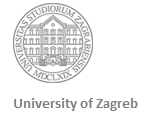Course title: American Women’s Writing in the Nineteenth Century (A, 19. st.)
Subject: Nineteenth-Century American Literature
Instructor: Dr. sc. Jelena Šesnić
ECTS credits: 6
Language: English
Duration: Fall semester
Status: Elective
Course type: 1 period lecture + 2 periods seminar
Prerequisites: Enrolment in the 3rd or 5th semester
Course requirements: Regular attendance; assignments in and outside class (discussion, written tasks, short presentations); seminar paper (6-7 pp, ca 2500 words); continuous evaluation (a mid-term and a final test).
Course description: The course is an overview of representative texts by and about women in nineteenth-century America. In order better to contextualize the texts, we shall be looking at two traditions informing writing by women that are mutually compatible rather than exclusionary. The one is represented by Rowlandson’s captivity narrative and situates a woman at the centre of the project of nation-building, while the other is exemplified by Rowson’s hugely popular seduction novel, from which the novel writing in the States takes off. Thus the feminine tradition appears to be crucial from the very beginning for the way the American nation describes and represents itself. This argument, however, becomes possible only in the wake of the strong intervention into the field of literary history and literary canon formation enacted by feminist, poststructuralist, new historicist and cultural critics from the 1970s onwards.
Required reading:
Novels/ narratives
1. Mary Rowlandson: The Sovereignty and Goodness of God (1682)
2. Susanna Rowson: Charlotte Temple (1791)
3. Lydia Maria Child: Hobomok (1824)
4. Harriet Jacobs: Incidents in the Life of a Slave-Girl (1861)
5. Rebecca Harding Davis: Margret Howth (1861)
6. Frances Harper: Iola Leroy (1893)
Syllabus
Week 1: Two traditions of women’s writing in the USA; historical and cultural contexts of their emergence (Welter’s thesis, competing views). Revisionist interventions into the canon formation.
Week 2: Introduction to Rowlandson.Mary Rowlandson’s captivity narrative as a formative national text; Richard Slotkin’s notion of „regeneration through violence“
Week 3: Analysis of cultural, political, ethical, and gendered implications of Rowlandson’s captivity
Week 4: Susanna Rowson’s novel as a representative and generative instance of the seduction novel
Week 5: Rowson’s novel in the context of transatlantic cultural exchange and sentimentalism
Week 6: L.M. Child’s Hobomok and the idea of cultural nationalism
Week 7: Hobomok as a revisionst text; politics of race and gender in the novel (Indian and female characters)
Week 8: Mid-term. Introduction to Jacobs’s slave narrative depicting her life in slavery
Week 9: Jacobs’s text in between the domestic, sentimental and seduction novels and representative masculine slave narratives
Week 10: Analysis of narrative and cultural strategies in conjunction with race and gender in Jacobs’s text.
Week 11: Harding Davis’s Margret Howth as a novel of the industralizing America and of the emerging working class.
Week 12: Analysis of the novel’s accommodation of realism with the conventions of sentimentalism and women’s fiction.
Week 13: Harper’s Iola Leroy and the post-slavery, post-Reconstruction America. On-going influence of the domestic and sentimental fiction.
Week 14: Status and color distinction within the black community; Iola Leroy as a „tragic mulatta“ and the problem of passing.
Week 15: Final test. Student evaluation.
Secondary literature (required):
– Castiglia, Christopher. Bound and Determined: Captivity, Culture-Crossing, and White Womanhood from Mary Rowlandson to Patty Hearst. Chicago, London: The U of Chicago P, 1996. (selection)
– Foster, Frances S. Written by Herself: Literary Production by African American Women, 1746-1892. Bloomington, Indianapolis: Indiana UP, 1993. (selection)
– Goddu, Teresa. Gothic America: Narrative, History, and Nation. New York: Columbia UP, 1997. (selection)
– Grasso, Linda. The Artistry of Anger: Black and White Women’s Literature in America, 1820-1860. Chapel Hill, London: The U of North Carolina P, 2002. (selection)
– Howard, June. «What Is Sentimentality?» American Literary History 11.1 (Spring 1990): 63-81.
– Kaplan, Amy. «Manifest Domesticity». American Literature. No More Separate Spheres. 70.3 (September 1998): 581-606.
– Nelson, Dana. The Word in Black and White: Reading ‘Race’ in American Literature, 1638-1867. New York, Oxford: Oxford UP, 1994. (selection)
– Schloss, Dietmar. “Republicanism and Politeness in the Early American Novel”. Early America Re-Explored: Readings in Colonial, Early National, and Antebellum Culture. Eds. Fritz Fleischmann and Klaus H. Schmidt. New York: Peter Lang, 2000. 269-90.
– Slotkin, Richard. Regeneration through Violence: the Mythology of the American Frontier, 1600-1800, Norman: U of Oklahoma P, 1973. (selection)
– Welter, Barbara. „The Cult of True Womanhood: 1820-1860“. 1966. Locating American Studies: The Evolution of a Discipline. Ed. Lucy Maddox. Baltimore, London: The Johns Hopkins UP, 1999. 43-70.
– Yellin, Jean Fagan. „The ‘Feminization’ of Rebecca Harding Davis“. American Literary History 2.2 (Summer 1990): 203-19.
Optional reading:
– American Literature. No More Separate Spheres. 70.3 (Sept. 1998).
– Armstrong, Nancy and Leonard Tennenhouse. „The Problem of Population and the Form of the American Novel“. American Literary History 20.4 (Winter 2008): 667-85.
– Baym, Nina. «Women’s Novels and Women’s Minds: An Unsentimental View of Nineteenth-Century American Women’s Fiction». Novel: A Forum on Fiction 31.3 (Summer 1998): 335-50.
– Carby, Hazel. Reconstructing Womanhood : The Emergence of the Afro-American Woman Novelist. New York, Oxford: Oxford UP, 1989.
– Davidson, Cathy. Revolution and the Word: The Rise of the Novel in America. New York, Oxford: Oxford UP, 1986. (selection)
– Douglas, Ann. The Feminization of American Culture. 1977. New York: Farrar, Straus and Giroux, 1998.
– Elbert, Monika, ed. Separate Spheres No More: Gender Convergence in American Literature, 1830-1930. Tuscaloosa, London: The U of Alabama P, 2000.
– Foster, Frances S. Written by Herself: Literary Production by African American Women, 1746-1892. Bloomington, Indianapolis: Indiana UP, 1993.
– Hendler, Glenn. Public Sentiments: Structures of Feeling in Nineteenth-Century American Literature. Chapel Hill, London: The U of North Carolina P, 2001.
– Karcher, Carolyn. «Reconceiving Nineteenth-Century American Literature: The Challenge of Women Writers». American Literature 66.4 (Dec. 1994): 781-93.
– Kelley, Mary. Private Women, Public Stage: Literary Domesticity in Nineteenth-Century America. New York, Oxford: Oxford UP, 1984.
– Kilcup, Karen, ed. Soft Canons: American Women Writers and Masculine Tradition. Iowa City: U of Iowa P, 1999.
– Maddock Dillon, Elizabeth. «Sentimental Aesthetics». American Literature 76.3 (September 2004): 495-523.
– Merish, Lori. Sentimental Materialism: Gender, Commodity Culture, and Nineteenth-Century American Literature. Durham, London: Duke UP, 2000.
– Moon, Michael and Cathy Davidson, eds. Subjects and Citizens: Nation, Race, and Gender from Oronooko to Anita Hill, Duke UP, Durham and London, 1995.
– Romero, Lora. Home Fronts: Domesticity and Its Critics in the Antebellum United States. Durham, London: Duke UP, 1997.
– Samuels, Shirley, ed. The Culture of Sentiment: Race, Gender, and Sentimentality in Nineteenth- Century America. New York, Oxford: Oxford UP, 1992.
– Showalter, Elaine. Sister’s Choice: Tradition and Change in American Women’s Writing. Oxford: Clarendon P, 1991.
– Šesnić, Jelena. Mračne žene. Prikazi ženstva u američkoj književnosti (1820.-1860.). Zagreb: Leykam International, 2010.
– Tate, Claudia. «Allegories of Black Female Desire; or, Rereading Nineteenth-Century Sentimental Narratives of Black Female Authority». Changing Our Own Words: Essays on Criticism, Theory, and Writings by Black Women. Ed. Cheryl Wall. New Brunswick, London: Rutgers UP, 1991. 98-126.
– Tawil, Ezra. „Domestic Frontier Romance, or, How the Sentimental Heroine Became White“. Novel: A Forum on Fiction 32.1 (Fall 1998): 99-124.
– Tompkins, Jane. Sensational Designs: The Cultural Work of American Fiction, 1790-1860. New York, Oxford: Oxford UP, 1985.
– Warren, Joyce, ed. The (Other) American Traditions: Nineteenth-Century Women Writers. New Brunswick, New Jersey: Rutgers UP, 1993.



